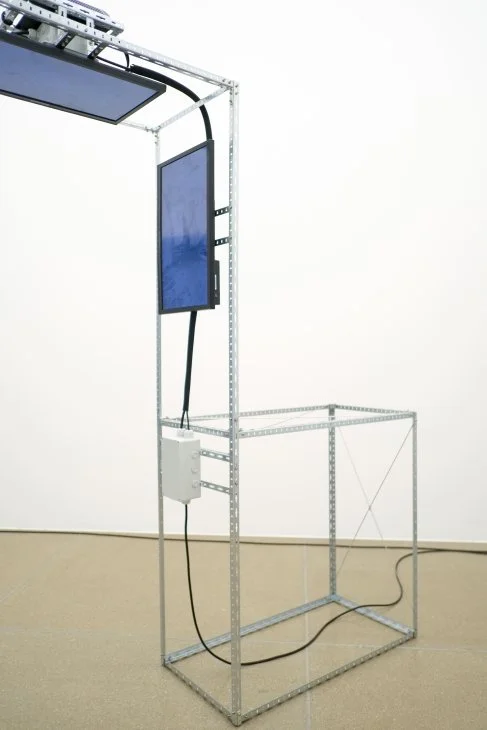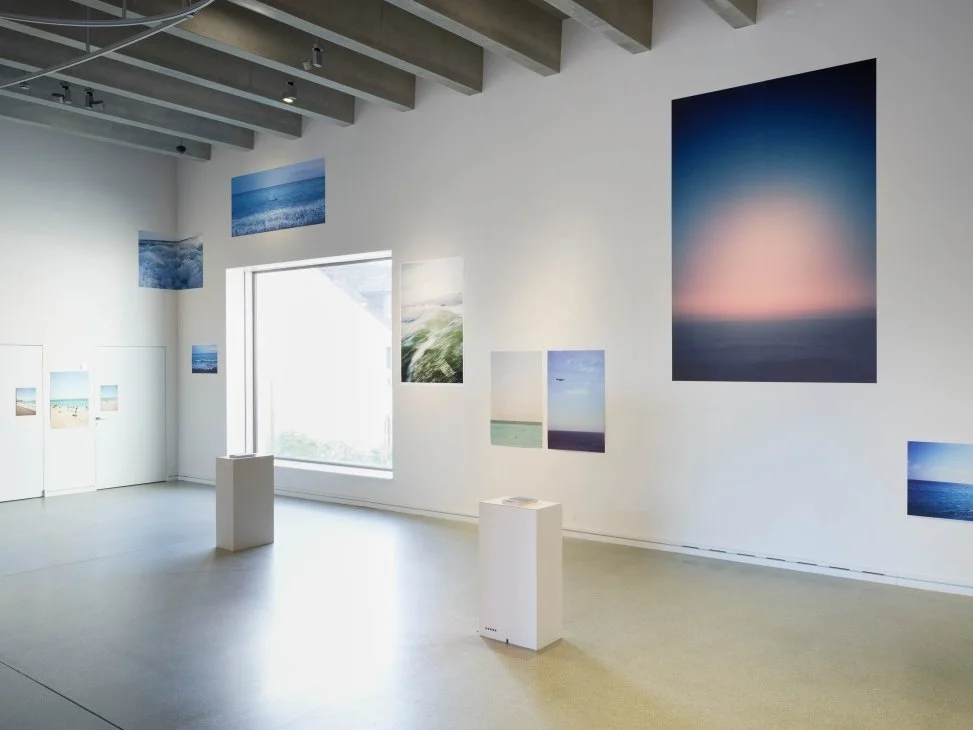Nick Walter

“I call it duality — my pieces often oscillate between being deeply calming, beautiful, and simultaneously unsettling or haunting. This tension fascinates me — between beauty and threat, comfort and discomfort.”
Nick Walter is a 21-year-old artist based in Switzerland whose work blurs the line between analog craft and digital experience. Rooted in photography but expanding into immersive video installations, his process often involves labor-intensive techniques like photogrammetry and cyanotype to create dreamlike, layered environments. In this interview, Walter reflects on building entire worlds through tactile image-making, the emotional dualities in his work, and why he chooses handcrafted methods over AI-generated ones.
Could you tell us a bit about yourself and your background?
My name is Nick Walter, I am 21 years old, born in Germany, and currently living and working in Switzerland. My artistic journey started with photography at a very young age. In a way, photography became my tool to explore and make sense of the world around me. I’ve always been extremely curious — I needed to see, observe, and document everything. As a child, I often spent a lot of time alone with my thoughts and experiences, and the camera quickly became a way for me to translate these inner worlds into images.
Photography remains a fundamental part of my practice today. Although my focus has shifted more towards film and video, these works are still rooted in photographic processes. I frequently employ photographic techniques such as slitscan, photogrammetry, scanning processes, and cyanotype. Many of my video works, even if they appear highly technical, involve extensive handwork. For example, I often transform filmed material into single frames, produce cyanotype prints of these stills, and then re-digitize them individually by hand. This tactile, analog process is essential to my practice.
Your work shifts between poetic imagery and more direct references to global concerns, often blending natural landscapes with digital forms and technologies. In this context, what do you think the role of art, and the responsibility of the artist, should be in today’s world?
That’s a difficult question. In general, I believe that artists reflect the issues of our world — whether consciously or unconsciously — simply because we always create under certain contemporary conditions that inevitably influence our work. Some artists address these issues very directly, while others might process them more subtly or even attempt to conceal them.
For me personally, art is a space for openness — a place where viewers can encounter something freely, without judgment or the constant demand for positioning themselves. We live in a time that is flooded with information, crises, and constant calls for opinions. While that is important, I want to offer people a space where they are allowed to dream. My work, at its core, is an attempt to share my own perspective — a very dreamlike view on the world.
Ausstellungsansicht Auswahl 24. Aargauer Kunstschaffende, Aargauer Kunsthaus, Aarau
Ausstellungsansicht Auswahl 24. Aargauer Kunstschaffende, Aargauer Kunsthaus, Aarau
Ausstellungsansicht Auswahl 24. Aargauer Kunstschaffende, Aargauer Kunsthaus, Aarau
Einzelausstellung, Ausstellungsansicht Warum springen Wale aus dem Wasser, im Aarauer Stadtmuseum 2023
Digital technologies clearly play a big part in your work, from the use of screens to your references to artificial intelligence. What draws you to working with these tools, and how do you think they change the way we understand or relate to art today?
It’s actually interesting how many people assume I work with AI tools — but I don’t. My installations are indeed very technical, but they always have a deeply analog origin. For example, my piece Echo of the World presents a journey through an artificial cave, but this cave wasn’t generated by AI. Over the course of more than a year, I collected hundreds of small pebbles and created 3D models of them using photogrammetry. In the end, I had around 800 individual scanned stones, which I then used to build the cave, stone by stone.
I use technologies like projections and screens because they allow me to create immersive experiences, drawing viewers deeper into these constructed worlds. Personally, I couldn’t work with AI-generated imagery right now — it introduces too many uncontrolled variables. What I enjoy most about my process is the complete freedom and control I have over every element of the work.
Your exhibitions combine different media—photographs, video, and sculptural structures—arranged in unique spatial compositions. How do you approach the process of installing your work, and what do you want viewers to experience when moving through the space?
I enjoy working on a spatial scale because it allows me to build entire worlds. Usually, I start with an initial idea and then adapt the installation to the given architecture. I could fill endless rooms — when I enter a space, I immediately start visualizing how it could be transformed.
What’s essential to me is that my works always hold multiple layers or perspectives. I call it duality — my pieces often oscillate between being deeply calming, beautiful, and simultaneously unsettling or haunting. This tension fascinates me — between beauty and threat, comfort and discomfort. It’s something I first explored in photography, inspired by artists like Barbara Probst, who captures a single moment from multiple camera angles.
I developed my own variation of this approach, using one camera but trying to find as many layers within a single perspective. One of my early works Fog (2020) shows a street from two viewpoints — one image feels peaceful, while the other evokes anxiety and unease. Even today, though I usually work with a single viewpoint, I’m still driven by this interplay of emotions.
Fog, 2020
Ausstellungsansicht Auswahl 22. Aargauer Kunstschaffende, 3.12.2022–2.1.2023, Aargauer Kunsthaus, Aarau, Photo: David Aebi
Hügel 1, 2025
Tell us a bit about how you spend your day / studio routine? What is your studio like?
My studio is very close to where I live — just a 15-minute walk. It’s located in a former industrial building that is now temporarily repurposed; on the floors below mine, there are often parties and events happening. I’m in my studio almost every day but I’m most productive at night. I love the quietness of the late hours — looking out the window, seeing the empty streets and illuminated train tracks, hearing the distant bass from the parties downstairs.
Besides my own practice, I also work as a video technician for several well-known Swiss artists, which usually keeps me busy until around 6 PM — after that, I go straight to my studio and often work late into the night. At the same time, a lot of my work originates outdoors — I spend a huge amount of time outside, at all hours of the day and night. My artistic material always begins outside and is then processed in the studio.
What artwork have you seen recently that has resonated with you?
There are many works I could mention, but one of the most significant influences for me is the musician Tara Cunningham, with whom I collaborate very closely. Her work is very important for my own practice.
Because of my job as a video technician, I see many exhibitions every week, and I enjoy a lot of them. But the last time an exhibition truly moved me to tears was last summer: the solo exhibition of Sarah Brahim at the Bally Foundation. Her work is incredibly touching — I felt completely at home in her installations.
Is there anything new and exciting in the pipeline you would like to tell us about?
Yes! In January 2026, I will be part of a large video art exhibition, ranging from historical works by Nam June Paik to contemporary video art — including my own. I’m very excited to be included in such a remarkable lineup.
All images courtesy of the artist
Interview publish date: 23/07/2025
Interview by Richard Starbuck






